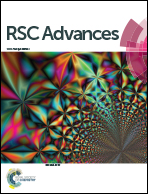Improved performance in Ag2S/P3HT hybrid solar cells with a solution processed SnO2 electron transport layer
Abstract
We successfully constructed a heterojunction structure composed of Ag2S nanocrystals/P3HT conjugated polymer with a relatively high absorption coefficient and broader absorption from the ultraviolet to near-infrared region. The assembled P3HT:Ag2S devices exhibited outstanding short-circuit current density around 19 mA cm−2. Meanwhile, we demonstrated that a low-temperature solution-processed nanocrystalline SnO2 thin film prepared by a facile synthesis method can be an excellent electron transport layer (ETL) material for hybrid solar cells. The SnO2 based hybrid solar cells exhibit an open circuit voltage of 280 mV, which was 100 mV higher than those for devices without SnO2. Based on the above work, we hypothesized that the higher power conversion efficiency is due to the excellent properties of nanocrystalline SnO2 films, such as high electron mobility and excellent transparency at visible wavelength and enhanced exciton dissociation efficiency, and better energy level alignment between FTO and Ag2S for greater photovoltage retention. The simple low temperature low energy consumption, and low-cost soft-chemical process is compatible with the roll-to-roll manufacturing of low-cost hybrid solar cells on flexible substrates.


 Please wait while we load your content...
Please wait while we load your content...